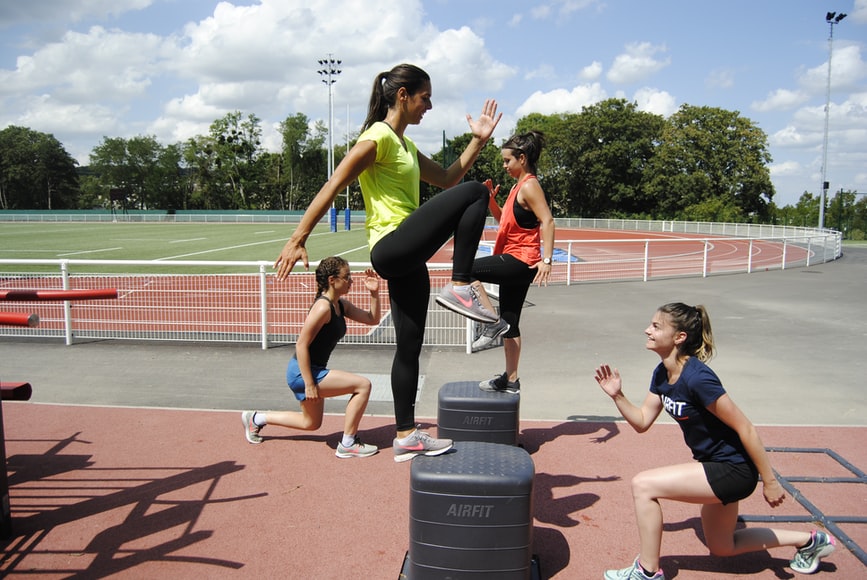
Your leg muscles support the rest of your body and allow you to move around. If they get too weak or unstable, there can be a domino effect on the rest of your body because it’s no longer properly supported. Workouts that strengthen your legs and hips can help you avoid back pain and injuries, and they can also improve your posture. You’ll be able to run faster and jump higher without worrying about injuring yourself.
Playing sports is a great way to stay active and fit, but it can also take a toll on your body if you’re not careful.
If you participate in sports, here are some tips to help keep your legs healthy:
Stay hydrated
You sweat a lot when you exercise, and if you’re not properly hydrated, your body can begin to shut down. Stay hydrated and you’ll prevent dehydration, which can lead to severe cramping or heat exhaustion. If you’re going to be exercising for more than a couple of hours, it’s also a good idea to take a sports drink with you that contains electrolytes. These drinks help replace the salts and minerals that your body loses through sweat. They can also help prevent dehydration.
Prepare for practice and games
Make sure you stretch before and after participating in sports. Proper stretching will help prevent injuries and soreness. Stretch both before and after participation to increase endurance, prevent injury and reduce the risk of soreness.
To stretch before exercise, stand with both feet together, bend over to touch your toes with your hands, or stretch to touch the floor with your fingertips. Hold for 10 seconds, then relax. Repeat three times. Stretching also helps prevent muscle soreness after physical activity by increasing blood flow to muscles.
Warm-up before strenuous activities, such as running or other high-impact exercises. Ladder walking is a good way to warm up without straining your muscles. Walk upstairs slowly for five minutes at a pace that allows you to breathe comfortably. Increase the difficulty by walking upstairs two steps at a time or walking downstairs one step at a time to really raise your heart rate.
Hip control – the key to injury prevention
Hip control is necessary for the strength room because the hip is one of the most mobile joints in our body, but if it’s not controlled, it’s also one of the most unstable ones.
The glute is intricately involved in hip stabilization, so anytime you have single leg movement in the gym or in life, try to be sure that you are not only shifting your leg hip through a full range of motion but also activating your glute to stabilize. If your hip is excessively mobile and unstable, this can cause problems for other structures in the area, including your knee.
Strengthen your muscles
Excessive forces in the knee are typically due to weakness in the glutes, or hip muscles in general (glute bridge for example). This is when the hamstrings take over for the glutes and pull on the knee in an attempt to stabilize it. The fix here is to strengthen the glutes with exercises like hip thrusts, back extensions, and bridges.
If you squat and deadlift a lot, throw those into the mix as well. A stronger posterior chain will equal stronger glutes, which equals less force through your knees. Many athletes neglect glute training because they feel like they don’t need it since they aren’t powerlifters or Olympic lifters.
However, if injuries occur, it is very important to visit a doctor to get adequate therapy, because many orthotic solutions can be helpful.
Start off slowly
If you’re a new runner, chances are that your legs will be sore after each run. This is normal for people who aren’t used to exercising. If your legs are healthy and you want to get in some more miles, do so gradually. Keep a journal of how far and fast you run, and how sore your legs were the next day. Write down any new exercises or stretches you did. By being aware of your body and what it’s going through, you can avoid injury and progress with your running rather than forcing it too much too soon.
Examine your shoes
Tracking the mileage of your running shoes is an essential part of maintaining healthy legs. Many runners make the mistake of continuing to run in worn-out shoes. This results in blisters, soreness, and other injuries. It is important to replace your shoes before you reach 500 miles of wear. The average runner should replace their running shoes every 6-8 months. Every runner is unique, so it is important to listen to your body. If you are having problems with your running shoes, get new ones that are better suited for you.
Enjoy running and watch your legs!
